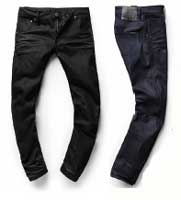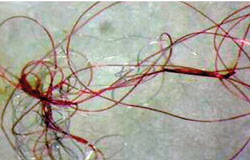Also, download this story from the electronic issue here
Plastic waste to fabrics may solve the problem of tonnes of plastic debris found in the oceans. But the solution is found to have both pros and cons, says Angelica Buan.
Next to global warming, ocean pollution is one of the most critical man-made phenomena witnessed in the 21st century. Recycling waste plastics is a topmost solution to easing (and preventing) ocean pollution.
An ideal outcome to resolving the issue and helping the economy at the same time is to tap the trilliondollar industry of retail clothing and footwear, which UK-headquartered retail research analyst Conlumino projects to reach sales of more than US$2 trillion by 2018.
It is, indeed, a genius move by several companies to create clothing from recycled plastic wastes.
Unravelling the thread
The fibre that makes these recycled plastic clothing is obviously plastics too.
Foss Manufacturing, a US nonwoven fabrics and speciality synthetic fibres producer, makes Eco-fi polyester fibre, from post-consumer plastic PET containers.
To make the fibre, Foss says waste PET at curb-side and community recycling centres is picked up; sorted by type and colour and stripped of their labels and caps. The containers are washed, and crushed, then chopped into flakes. The latter are melted and extruded to create fibre, which is afterwards crimped, cut, drawn and stretched into desired length for strength, then baled. The baled fibre can be processed into fabric for a variety of textile product end uses, such as clothing, blankets, carpets, wall coverings, automotive interiors, home furnishings, and craft felt. The fibre can also be blended with other fibres, such as cotton or wool, for enhanced qualities, says Foss.
Foss explains that for a 6 ft x 8 ft carpet, up to 48 bottles are needed while a sweatshirt may use up to 17 bottles; and the backseat of a car, 90 bottles.
Similarly, New York-based eco-thread producer, Bionic, offers its brand of plastic fibre Bionic Yarn. The start-up company, owned by Tyson Toussant and his investment partner, musician Pharrell Williams, collaborates with Parley for the Ocean, a creative initiative for de-clogging oceans with waste debris, for sourcing plastic waste materials.
Making a statement
Recycled plastic denims are no longer an impossible dream for the eco-conscious. Bionic Yarn, and Dutch denim brand G-Star have jointly worked for yet another clothing project called Raw for the Oceans. The latter has produced a denim collection fabricated from Bionic Yarn.

Also based in New York is Royal Apparel, which makes recycled plastic shirts and garments using fabric blends or rPET blends from bottles and polyesters. The blends are a mixtur e of 100% organic cot ton and recycled plastics and/or polyesters, usually in a 50/50 ratio.
Another American apparel company, Dirt Ball Fashion, uses recycled plastics along other recyclable materials like cotton for its line of 100% sustainable action sports clothing. It recently launched a 100% recyclable jacket made from regrind of 50 plastic water bottles.
Yet another American company engaged in ecoclothing is Virginia-based Renew Merchandise. The firm sources for regrind that is transformed into yarn and spun into fabric to make shirts. In 2013, the company targeted recycling more than 1 million bottles and doubled that in 2014.
UK brand-based firm Dgrade also collects bottles from recycling plants to produce varied lengths of fibres for yarn production. According to Dgrade, using rPET resin for yarn production only uses half of the energy needed compared to using virgin polyester. The firm designs and manufactures under license for sportswear firm Spiked.
Asians are not far behind and one example comes from Malaysian company Kloth Malaysia. I t has taken the inspiration from multinational company Waste2Wear that produces outfits from recycled plastic bottles and polyester fabric scraps. The four Malaysian women behind Kloth observed the recycling process in Waste2Wear’s factory in Shanghai, China, and decided to venture into the business.

The Malaysian company has introduced eco-friendly head scarves (worn by Muslim women) or what it calls "The Green Hijab" to the local market. Each hijab is made from two 500 ml plastic bottles. Meanwhile, the dye used for the scarves are also natural-based from roots and plants and so is the packaging, which features organic-soybean ink in the printing while the packaging is biodegradable. Kloth is looking at expanding its green hijab to the international market.
Fishing nets a suitable fit?
Meanwhile, Spanish brand Ecoalf recycles old fishing nets made of nylon, and plastic bottles, amongst other litter ranging from discarded ground coffee to tyres, into wearables like clothes, swimwear, coats, bags and shoes.
Javier Goyeneche, owner of Madrid-based Ecoalf collects the fishing nets, which are otherwise dumped into the oceans by fishermen that need new ones every two or three years. Around 0.9 m of fabric can be produced from 0.25 kg of the nets collected. The company has recycled about 24 tonnes of fishing nets, and 24 million plastic bottles and collaborated with top brands like Apple and Coca-Cola.
Now everyone can recycle
Meanwhile, a “futuristic” machine designed by Hungarian designer Kovács Apor can enable practically anyone to recycle plastic bottles right in the comfort of one’s home!

Cited a finalist in the 2014 Electrolux Design Lab, the Pete machine can be wall-mounted just like any regular appliance, and it actually is a 3D printer!
Apor explains: “The consumer only has to choose the required clothing type, colour, and cutting, while the machine gives the amount of PET bottles needed for the fabrication. It turns the bottles into polyester and prints the garments.” He says his machine is more eco-friendly than recycling processes that turn bottles into textiles since the latter methods require chemicals and thus, end up polluting the environment.
Apor says he was inspired to innovate the machine after seeing floating PET bottles in the Danube river during a rainy spell. He likens the Pete machine to nothing more than a special rubbish bin and says that the recycling concept will encourage less rubbish in the environment.
Waste to outfits: is it a real solution?
Recycling plastics for clothing seems too good an antidote. Environmental experts argue that man-made activities, like washing, can only bring the plastic microfibres, tiny synthetic threads that measures less than 1 mm, back into the waterways.
This is supported by a 2011 study by Dr Mark Browne, an ecologist and postdoctoral fellow at the National Centre of Ecological Analysis and Synthesis in California, US. He found high concentrations of plastic fibres (from synthetic clothing) near sewage outflows. The microfibres were also found to comprise about 85% of human-made litter on the shorelines.
According to Browne’s study, plastic fibres are shed each time synthetic-fabric garments are washed in washing machines. The water that is drained results in plastic filaments ending up in sewers and eventually in the oceans. He added that most washing machines, as well as sewage plants, lack filters that are able to trap the fibres.
Browne sampled wastewater from domestic washing machines and found that around 1,900 strands of fibre can be washed off a synthetic garment.

The synthetic fibre migration is a serious, albeit, unnoticeable problem, that Browne and other scientists who support his findings, hope will be addressed by the industry. But Browne’s research is not supported by companies that rely on synthetic fabrics for their garments, for obvious reasons.
Thus, while microbeads from personal care products are getting global attention, the management of synthetic microfibres has yet to gain traction.
(PRA)




























